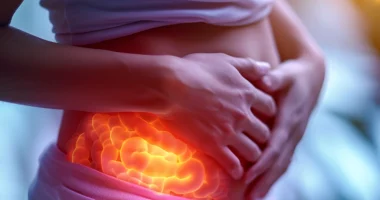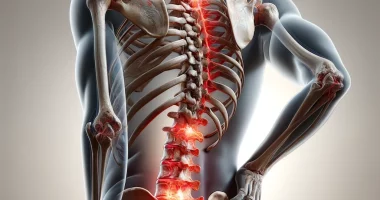Cerebrovascular occlusive disease
Definition
Cerebrovascular occlusive disease, or atherosclerosis of cerebral vessels – is the process of atherosclerotic plaque formation within cerebral vessels, resulting in disorders of the cerebral blood supply. It can be asymptomatic or manifested by dyscirculatory encephalopathy, transient ischemic attacks, or stroke. The diagnosis uses angiography of cerebral vessels, duplex scanning or MRI of cerebral vessels, electroencephalography, CT, and brain MRI. If indicated, surgical treatment is performed.
General information
Atherosclerosis of cerebral vessels accounts for about one-fifth of all neurological pathology and about half of cardiovascular diseases. Atherosclerotic processes in cerebral vessels can start as early as 20-30 years of age, but due to the long asymptomatic course, the manifestation of the disease usually occurs after 50 years of age. Clinical manifestations of cerebral atherosclerosis are associated with the gradual development as a result of vascular damage, insufficiency of cerebral circulation, and ischemia of brain tissue. Chronic cerebral ischemia, along with ischemic heart disease, is the most severe consequence of atherosclerosis. It can cause complications such as stroke and dementia.
Reasons
Several factors are known to contribute to the development of cerebral atherosclerosis. These include, first of all, age. Earlier development of atherosclerotic changes and faster progression of cerebral atherosclerosis are noted in cases of unbalanced diet (excessive use of fats and carbohydrates, insufficient amount of vegetable food, overeating, presence in the diet of fried and spicy dishes, etc.), metabolic disorders (obesity, diabetes mellitus, hormonal failures), hypodynamia, smoking, and frequent intake of large doses of alcohol.
Favorable conditions for the emergence and progression of atherosclerosis are formed against the background of arterial hypertension. Often, atherosclerosis and hypertension develop together, mutually aggravating each other.
The existence of many predisposing factors suggests that this process is polyetiologic. However, the question remains open as to why some patients have predominantly cardiac vascular lesions and others cerebral ones. It is also necessary to take into account the role of hereditary mechanisms since family cases of such a complication of cerebral atherosclerosis as stroke are widely known.
Symptoms
Clinically, cerebral atherosclerosis begins to manifest itself when atherosclerotic plaques inside the vessels block cerebral blood flow to the extent that ischemia occurs and dyscirculatory encephalopathy develops. According to the severity of cerebral circulation disorders, three stages of cerebral atherosclerosis are distinguished.
- Initial stage. Symptoms are transient, often occur during emotional and physical overload, and disappear at rest. There is an asthenic syndrome: weakness, unusual fatigue, increased irritability, lethargy, and difficulty concentrating. Periodic sleep disturbances in the form of insomnia and/or daytime sleepiness and occasional dizziness may occur. There is a slight decrease in the rate of thinking and the ability to memorize and retain in memory new information. Many patients during this period complain of headaches combined with head, ears, or one ear noise.
- Progressive cerebral atherosclerosis. Mnestic disorders and emotional changes in character are aggravated. The general background of mood decreases, and depression may develop. The patient becomes mistrustful and anxious. Memory disorders become clearly expressed – the patient and his relatives say that he can not remember the events of the current day, which confuses them. Noise in the head acquires a constant character. There is vestibular ataxiaand slurred speech. Possible tremor of the fingers or head, often there is a decrease in vision and some hearing loss. The ability to perform productive professional activities is gradually lost.
- Dementia. Intellectual decline progresses, and memory lapses, speech impairment, apathy, and complete disappearance of interests are observed. The patient loses the ability to orient in the environment and time, loses self-care skills, and requires supervision.
Diagnosis
The neurologic status of patients with cerebral atherosclerosis, depending on the stage of the disease, may show paresis of upward gaze, horizontal nystagmus, some anisoreflexia, symmetrical increase or sluggishness of reflexes, instability in the Romberg pose, tremor of the outstretched fingers, and impaired coordination tests. Paresis and other neurologic deficits are possible after a stroke. Ophthalmoscopy performed by an ophthalmologist can reveal atherosclerotic changes in the retinal vessels. In case of hearing loss, consultation of an otolaryngologist with audiometry is indicated.
More accurately diagnosing atherosclerosis of cerebral vessels allows vascular studies. The most accessible of them is angiography of cerebral vessels. Also helpful may be the performance of ultrasound of the head vessels and MRI of the cerebral vessels. It is essential to conduct vascular studies in dynamics and assess the degree of occlusion of the carotid and main intracranial arteries. EEG is used to analyze the functional state of the brain and CT and MRI of the brain are used to visualize cerebral tissues (especially during stroke diagnosis).
Treatment
Curing cerebral atherosclerosis is impossible, but timely, regular, and comprehensive therapy can slow its progression. First, it is necessary to eliminate the factors that aggravate the development of atherosclerotic processes. It is necessary to follow a plant-based diet excluding nutrients with high cholesterol content (meat, eggs, margarine, canned fish, sausage, fast food), introduce daily walks, reduce psycho-emotional load, eliminate smoking and alcohol intake, and optimize body weight. Hypertensives need a careful selection of hypotensive treatment. Correction of the blood lipid spectrum is essential, and it is prescribed according to the results of the study of the content of cholesterol and lipids in the blood.
Pathogenetic treatment of cerebral atherosclerosis aims to improve neurons’ metabolism and blood supply, increase their resistance to ischemia, prevent thrombosis, and improve mnestic functions. Long-term administration of small doses of acetylsalicylic acid is prescribed as antiplatelet therapy.
Repeated TIA, stroke, and occlusion of carotid arteries with a lumen reduction of more than 70% are indications for surgical treatment of cerebral atherosclerosis. There are two types of surgeries: endarterectomy (removal of atherosclerotic plaque together with the intima of the vessel) and creation of a vascular shunt bypassing the arterial section obturated by atherosclerotic plaque. When indicated, neurosurgeons perform carotid endarterectomy, the formation of extra-intracranial anastomosis, the prosthesis of the brachiocephalic trunk, and other operations.
All these treatment options are available in more than 600 hospitals worldwide (https://doctor.global/results/diseases/cerebrovascular-occlusive-disease). For example, Extra-intracranial arterial bypass (EIAB) can be done in 28 clinics across Turkey for an approximate price of $19.1 K(https://doctor.global/results/asia/turkey/all-cities/all-specializations/procedures/extra-intracranial-arterial-bypass-eiab).
Prognosis
The prognosis of cerebral atherosclerosis is highly variable. Much depends on the patient’s age, the timeliness of the initial treatment measures, and the ability to eliminate the existing risk factors completely. The most severe complications of cerebral atherosclerosis are stroke and dementia, resulting in severe disability of the patient and possible death.
Prevention of atherosclerosis
The best prevention of atherosclerosis of any localization is a healthy lifestyle, which implies reasonable physical activity, a rational diet, staying in the fresh air, and a quiet rhythm of life with adequate alternation of work and rest. Timely adjustment of one’s lifestyle, adequate treatment, if necessary, and improvement of cerebral blood flow by surgery – all these activities can be attributed to measures of secondary prevention of cerebral atherosclerosis, allowing to avoid such complications as stroke and dementia.



